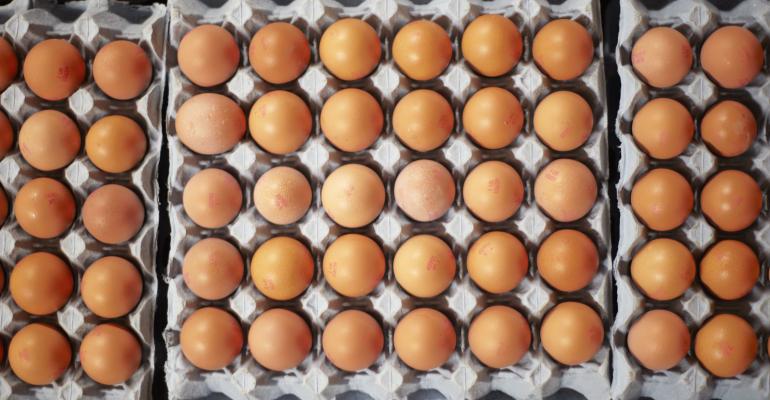The pandemic put unprecedented stress on independent restaurants, who were forced to tackle a global health crisis and fluctuating legal mandates while adapting to meet the changing needs of their clientele. Those who weathered the storm were then met with rising inflation the likes of which our nation hasn’t seen in decades.
Inflation has eased some since a year ago, but it remains stubbornly high, putting pressure on business owners as well as on consumers’ discretionary spending. It has been tough sledding, but independent restaurant operators are tough people, and many have found new ways to stay afloat, make money and continue serving their communities.
For its inaugural State of Independent Restaurants report, Nation’s Restaurant News surveyed hundreds of restaurant operators to understand the independent restaurant landscape at this pivotal moment for the industry. The data is enlightening, with insights on food and labor costs, menu development and marketing platforms, as well as what independents can learn from the big-chain playbook. The survey also uncovered significant optimism from this resilient group, who feel bullish on their futures even as they acknowledge the speed bumps ahead.
How inflation impacts ingredient sourcing and menu development
Consumers feel inflation when the bill comes, but restaurant operators feel inflation up and down the supply chain.
More than half of survey respondents, 53%, pointed to increased food costs as one of the industry’s biggest challenges right now, and 58% identified food cost inflation as a challenge influencing menu development. Menus are one of a restaurant’s most powerful marketing tools, and the prices they charge directly affect value proposition and profitability.
“We’re absolutely feeling it from all angles,” said Aaron Lyons, founder of fast-casual Dish Society in Houston and Austin and casual-dining restaurant Daily Gather in Houston. “The input, labor, and maintenance costs are impacting every supplier, some more than others. We definitely benefit and are faring slightly better using smaller, local suppliers, specifically when it comes to transportation cost, but they’re also dealing with higher costs on their end that they ultimately have to pass along to us.”
At New York City trattoria Forsythia, executive chef and owner Jacob Siwak serves a tightly focused menu where handmade pastas are the star.
“When it comes to increased costs, offering a prix-fixe menu has helped with menu planning and pricing,” Siwak said. “Our menu comes with different options, so our guests can still customize their meals and get value out of the experience.”
For some guests, that means choosing an antipasto, a main course and a glass of wine. For others, that means going all-in on the multi-course menu and beverage pairings. The flexibility empowers customers while also benefitting the restaurant’s bottom line.
Balancing increased costs with consumer price sensitivity
According to the NRN report, August 2023 data showed that food-away-from-home prices experienced more than double the year-over-year increase of food-at-home costs. Raising prices is a key lever for restaurants to pull as they manage their margins, but there’s a limit to how much customers are willing to pay.
Lyons said that costs and consumer price sensitivity have been the biggest challenge at his restaurants, and there’s a fine line between recouping costs and deterring customers.
“There’s only so much price you can take before you ultimately end up pricing yourself out of your category,” he said, noting that there’s a threshold for counter-service restaurants like Dish Society that you just can’t cross.
“Regardless of the quality of the food we’re serving and where it comes from, customers can only take so much,” he said. “We’ve certainly adjusted prices, which has been unavoidable, but we’re focusing more on creating value and enhancing the overall experience, so it’s not just a transaction.”
Dish Society has launched a loyalty program and online ordering app, which created value for loyal guests and incentivized new guests to join the program. The restaurant then used that data to create tailored offers and unique experiences for those guests without turning to blanket discounts or promotions.
“Building deeper connections with our guests and delivering hospitality is becoming more and more rare in this industry,” Lyons said. “We’re trying to leverage that to our advantage.”
The tipping point
Forsythia took a unique approach to addressing increased costs and ensuring that its staff makes a living wage in always-expensive New York.
“We institute a 22% service charge that we're really candid about,” Siwak said. “It’s written on the menu, and it says why we do what we do and exactly what it is. We are totally transparent about what’s going on. There’s no hidden costs.”
The charge essentially acts as a tip, and it goes fully to the staff. Beyond helping out his team, Siwak sees it as a way to engage with guests.
“This sort of open communication is so important to us because it allows us to operate in community with our guests,” he said. “We find that it makes them receptive and more understanding about pricing all around.”
Check out more from this package here:
Dissecting the challenges of restaurant menu innovation in 2024
Hiring and retaining back-of-the-house restaurant staff remain key challenges for operators
How independent restaurant operators can improve their marketing





